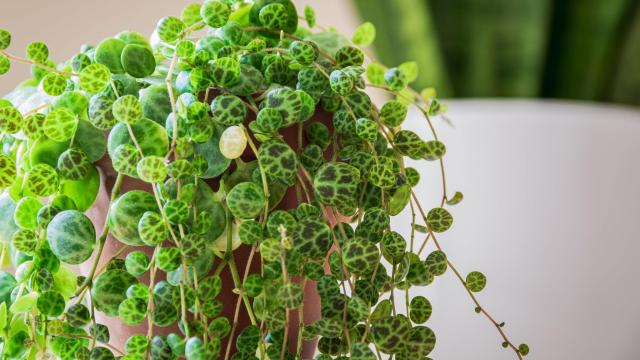If you’ve ever scrolled through a plant-focused Instagram account and wondered how the person’s home could possibly look so green and lush, there could be a few different explanations. The cynical ones involve the person having the financial resources to fill their space with countless plants — and possibly pay someone else to care for them — or that the foliage is actually fake.
But there is another way to achieve that almost-overgrown look — with plant tendrils cascading down the sides of a bookshelf: With trailing plants. And fortunately, there are many types that are so easy to care for that they’re nearly impossible to kill. Here’s what to know about trailing plants, including a few suggestions for your own home.
What are trailing plants?
Even if you’re not familiar with the term, you can probably picture what trailing plants look like. They have multiple stems that can grow to reach impressive lengths and don’t root at nodes along the stems. You’ll often seen trailing plants growing in hanging baskets, with their stems flowing over the sides.
Another popular option is growing them in a pot, and placing it either on top of a tall piece of furniture — where the stems can drape down as they grow — or on top of a long, flat horizontal surface (like a mantle).
Trailing plants that are easy to care for
Here are a few examples of indoor trailing plants that are easy to keep alive:
- Silver or satin pothos: Not only does it trail, but it has cute heart-shaped leaves. It prefers bright, indirect light, but will tolerate medium light.
- English ivy: It can do more than cover old brick buildings on east coast college campuses. When grown indoors, ivy needs bright, indirect sunlight.
- Heartleaf Philodendron: Like the others, it grows best in bright, indirect sunlight. But unlike the others, it can also survive in rooms with low light.
- Hoya curtisii: It may take longer than expected for the stems featuring silvery spade-shaped leaves to really start growing into long vines, but it’ll be worth it. This one needs humidity and a spot that gets at least a few hours of bright light a day.
- String of turtles: Also known as peperomia prostrata, this semi-succulent likes high humidity and only needs medium light.

Leave a Reply
You must be logged in to post a comment.